In my first New York garden I grew rooftop crops in all-day sun: eggplants, cucumbers, tomatoes—sunrise-to-sunset stuff. Two moves later, losing sun along the way, I have been plunged into north-facing shade with summer-only hours of sunlight. This challenge forced me, an edible gardener and cook, to explore the possibilities of edible shade gardening.
Let those tomato dreams go. Gardening in denial will frustrate you to such a degree that you may be tempted to throw in the trowel, and you don’t want that. Instead, when dealt a shady hand, adjust your expectations. There is life after shade. And it can be exciting.
Read on for a list of 23 edible plants—some common, some surprising—to grow in a shady garden.
Photography by Marie Viljoen.
Above: Not all shades are equal. The list of plants that follows grows in conditions ranging from full shade (no sun) to semi-shade (less than six hours). I have open shade, created by a Brooklyn brownstone between the garden and the sun. In summer the sun rises high enough to give some of my plants some hours of direct sunlight. But in spring and fall I grow in full shade.
Nasturtiums
Above: Many leafy greens perform well in shade. From nasturtiums to lettuces, cresses, kales, and pea shoots, you will be able to grow you own salad bowls without hours of direct sun.
Arugula
Above: If I had to pick one plant for president of the shade garden it would be arugula. Not only does it germinate reliably and fast, but my shade-grown arugula has been fuller and more prolific than the sun-exposed crops of other years.
Lambs Lettuce
Above: A cold season crop, lambs lettuce (also called mâche and corn salad) sown in fall can be picked late in the year or overwintered to become lush the following spring.
Spinach
Above: Planted in succession in early spring, cold-loving spinach can be harvested until warm weather begins. My seed came from Grow Journey’s Seeds of the Month Club ($11.99 a month for a year’s subscription).
Mustards
Above: There is a cornucopia of mustard varieties to choose from, and they relish the protection that shade gives them from summer sun. Even better, they prefer the cooler weather at each end of the growing year.
Minutina
Above: A wild salad green with deeply toothed leaves, minutina (Plantago coronopus) is also commonly called erba stella or bucks-horn plantain. Most sources will state that it “cannot grow in shade.” Mine does. Yours will, too.
A packet of Minutina seeds is $3.95 from Johnny’s Seed.
Malabar Spinach
Above: I first grew Malabar spinach one garden ago, on our terrace in Harlem. Its succulent leaves on twining stems are very attractive and the large leaves make a good dinner (read more about it here). This warm-weather edible vine evolved in tropical forests and loves to ramble over trellises, tuteurs, and fences.
Sorrel
Above: Sheep sorrel (Rumex acetosella) and garden sorrel (Rumex acetosa) prefer shady conditions. The super-sour leaves are a good lemon replacement in salads and make delicious sauces and soups, especially when combined with the rich textures of butter or cream.
Daylilies
Above: Nutty daylily tubers, oniony daylily spring shoots, and cucumber-ish day lily buds and flowers are all edible. The invasive plant thrives in semi-shady conditions. I braise the tubers and pickle the buds every summer. Stuff the flowers like squash or use them to thicken soups.
Garlic and Chives
Above: I plant garlic cloves in November to harvest the bulbs in summer. During May and June, when the sun is higher in the sky, my garlic patch receives about four hours of direct sun and less to none over late fall, winter, and early spring. Chives fare even better.
Potatoes
Above: I planted seed potatoes in spring and dug beautiful fingerlings in late July. They received from three to six hours of sun a day during their growing period. They were delicious.
Tomatillos
Above: While tomatoes don’t like shade, rambling tomatillos will grow extravagantly in semi-shade, given a few hours of morning or afternoon sun. Be sure to support them in large wire cages.
Parsley, Celery, Cilantro and Chervil
Above: Indispensable parsley prefers to have some shade, and cilantro and chervil will be slower to bolt. In the same family, celery is a difficult crop at any time if your goal is succulent stems (there is a reason it is one of the most pesticide-laden conventionally grown crops), but I cultivate it for its lush leaves which I use in soups, salads, and salts (great on a cocktail glass rim).
Mint
Above: Mint’s aggressive escape-artist tendencies are a boon to shade gardeners who need plants that don’t give up. Highly versatile in the kitchen, especially if you like Middle Eastern and Southeast Asian cuisine, mint is also indispensable in the drinks department.
Basil
Above: Basil prefers shade in hot summer climates, and my Thai and purple basil crops grew to forest-like proportions—the first in all-day shade, the second with a few hours of afternoon sun.
Shiso
Above: Perilla, red leaf shiso—this purple-leafed herb self-seeds so readily that it may become a pest. Growing in pots in full shade all year, my shiso plants are two feet tall and have lent their leaves to my umeboshi (pickled Japanese apricots). Read about how to use shiso here.
Spicebush
Above: All-American spicebush (Lindera benzoin) is a small understory tree with intensely aromatic twigs, leaves, and fruit (on female plants), which smell like citrus and pine needles. The berries add a unique flavor to sweet breads and cookies, and work well in slow-cooked meat dishes. Add the spring leaves raw to salads and ceviches.
Ginger
Above: Planted in early summer and pulled four months later, my store-bought rhizomes produced a fine, fresh ginger crop. They grew in all-day shade in large troughs right up against the building. Next year I will plant more. In warmer regions they can stay in-ground through winter.
Alpine Strawberries
Above: Small, well-flavored, and prolific, Alpine strawberries (sometimes called fraises des bois) will produce fruit in semi-shade, something that their larger-fruited cousins refuse to do. And they make surprising cocktails.
Black Raspberries
Above: My potted black raspberry plants moved with us from a full-sun Brooklyn rooftop to a Harlem terrace with four hours of sun, then back to Brooklyn again, north-facing and with a few hours of sun in summer. They have not stopped fruiting.
Blueberries
Above: Blueberries are very forgiving when it comes to light requirements. As long as you give them acidic soil, they will give you fruit.
The journey continues and this list will grow.
What do you plant to eat in the shade?
See some of my favorite ways to eat the plants I grow:
- Spicy Spinach from 66 Square Feet.
- A Strawberry Shrub Cocktail.
- Garden to Table: Fall Fennel Recipes.


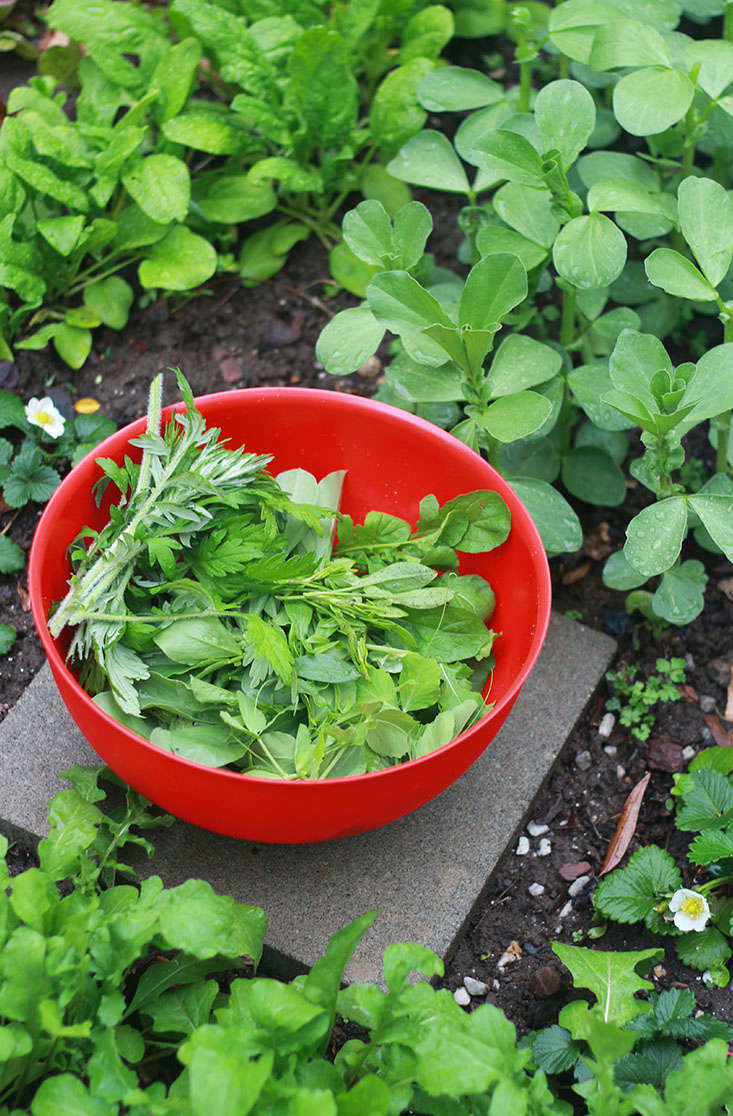

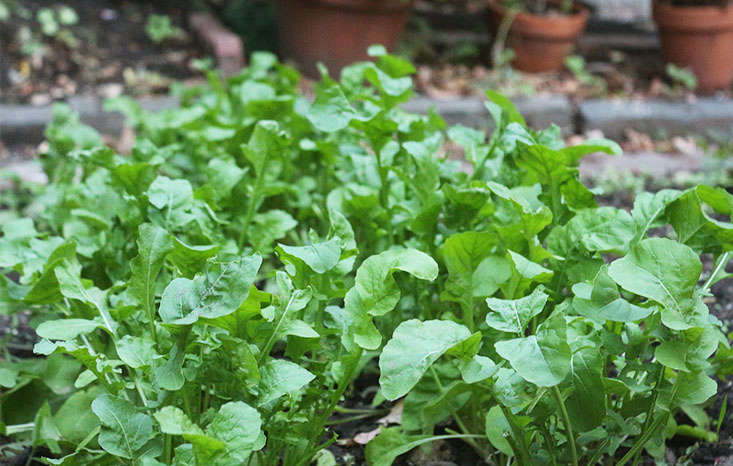





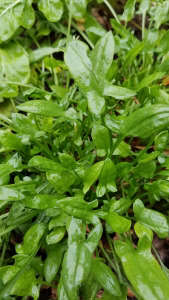


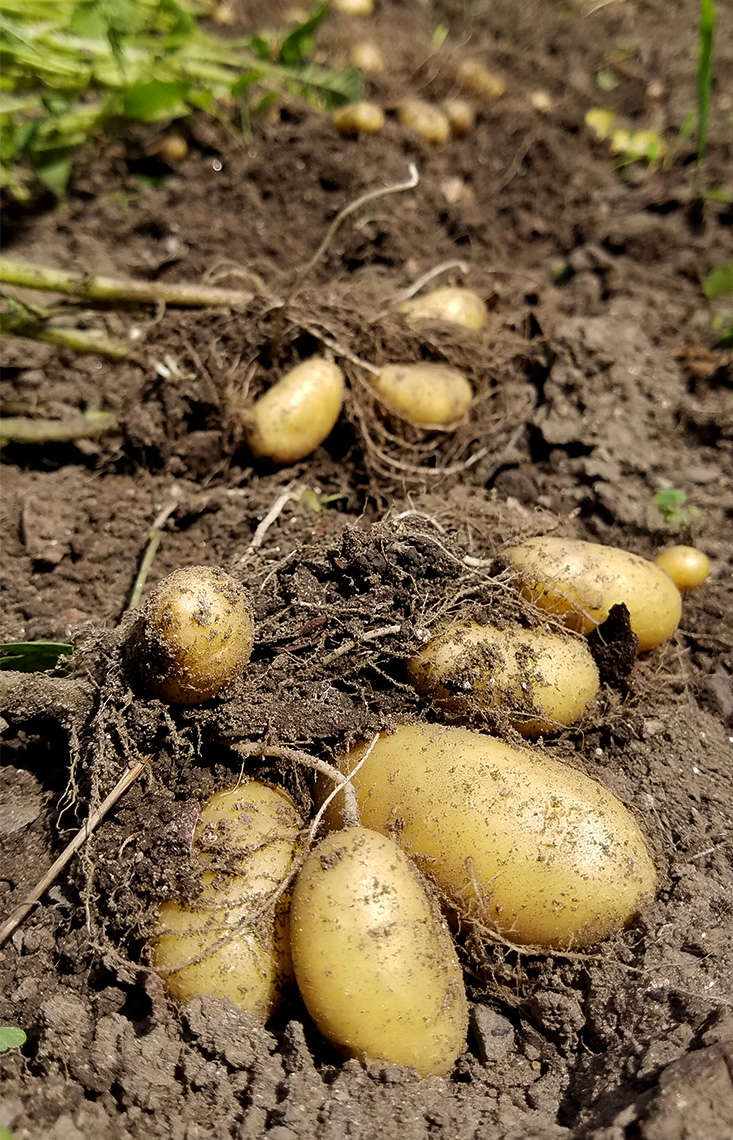

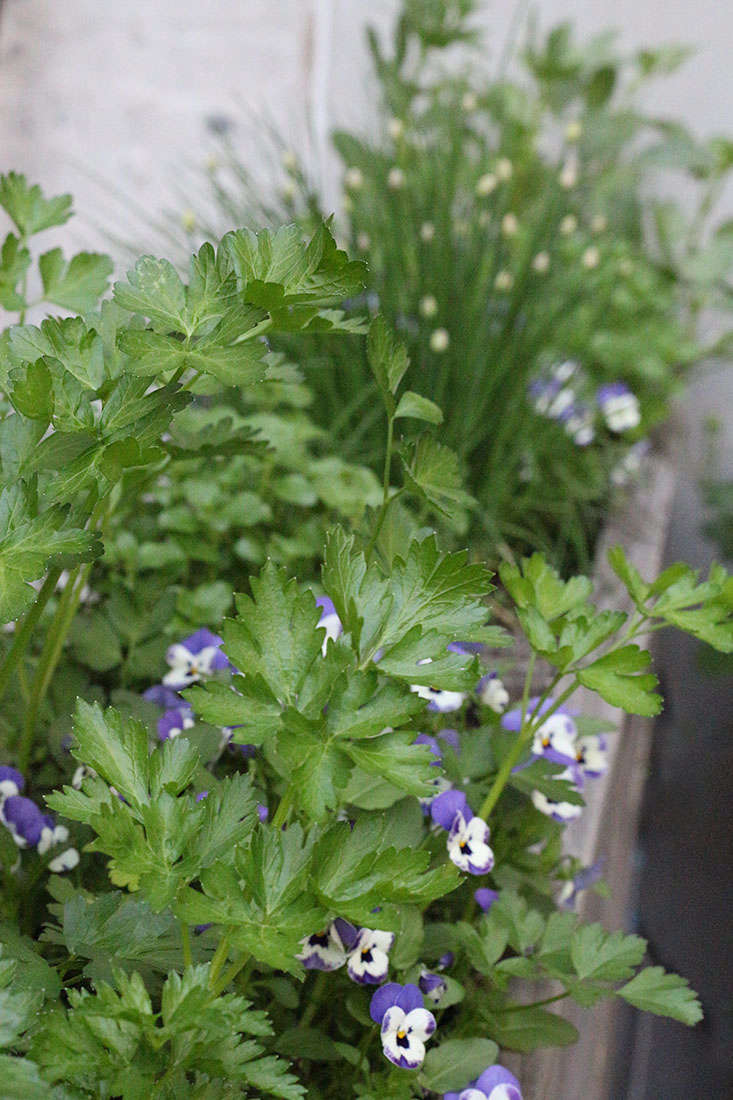





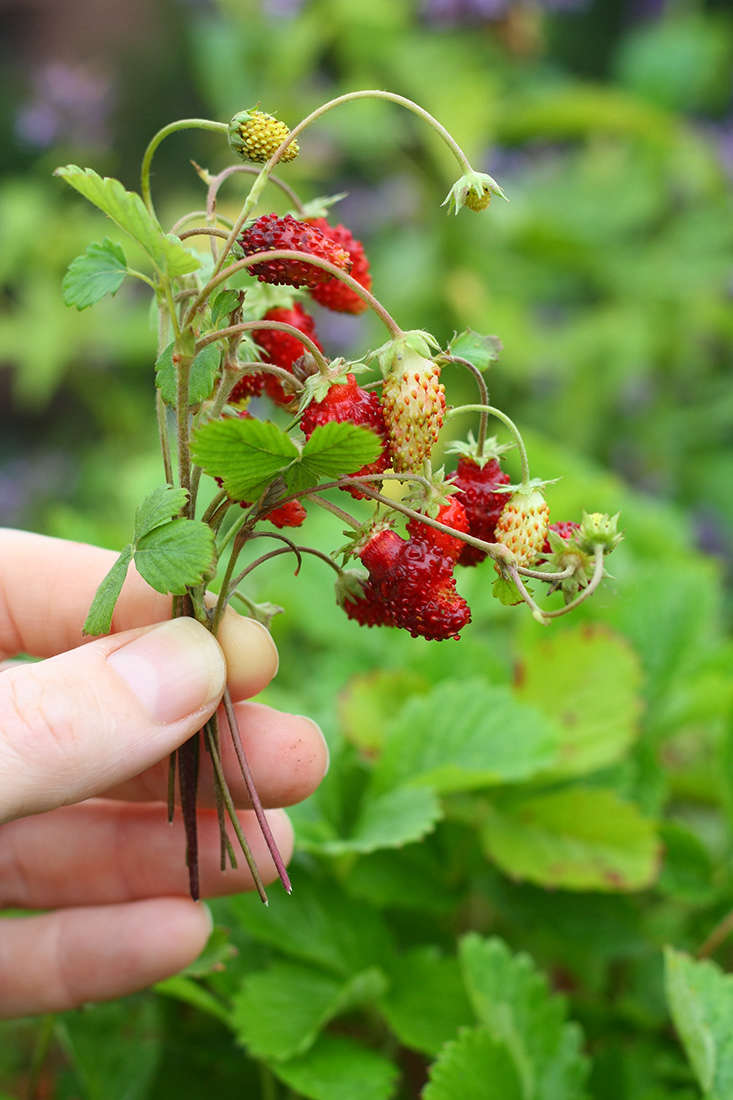









Have a Question or Comment About This Post?
Join the conversation